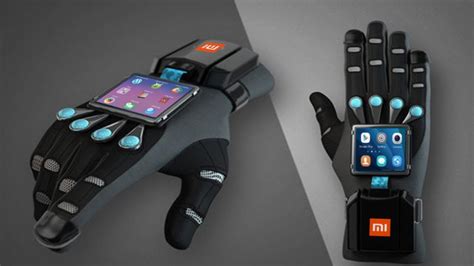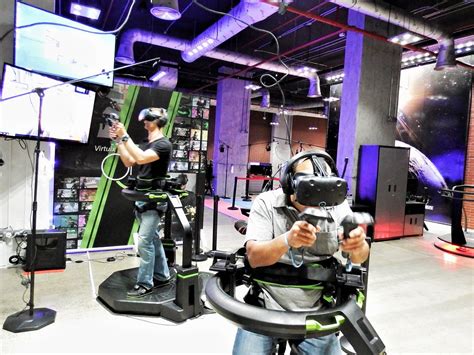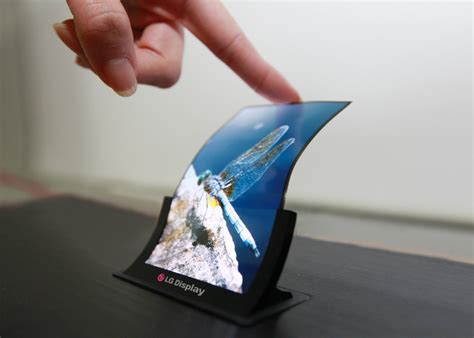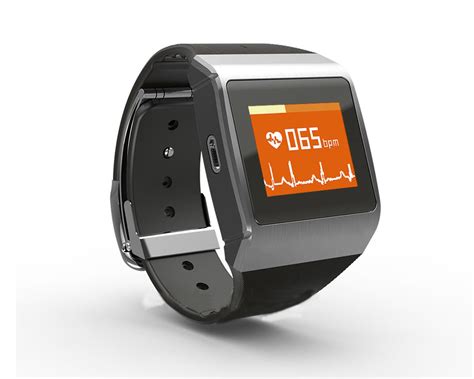Breaking News


Popular News


Discover the latest trends in gadget innovation including virtual reality, foldable screens, 5G integration, wearable health devices, smart home automation, and AI personal assistants. Stay ahead of the curve!Are you ready to step into the future of technology? The latest trends in gadget innovation are revolutionizing the way we interact with the world around us. From virtual reality in gaming to AI-powered personal assistants, the possibilities seem endless. In this blog post, we will explore the cutting-edge developments that are shaping the future of the gadget industry. From foldable and bendable screens to wearable health monitoring devices, 5G technology integration to smart home automation, we will take a closer look at how these innovations are transforming our daily lives. Join us as we delve into the exciting world of tech advancements and discover the incredible potential that these latest trends hold. Whether you’re a gadget enthusiast or simply curious about the future of technology, this blog post is sure to inspire and inform. So, let’s dive in and explore the latest trends in gadget innovation together!
Contents

The Latest Trends in Gadget Innovation – Virtual Reality in Gaming
The world of gaming has been revolutionized by the introduction of virtual reality (VR) technology. With VR headsets becoming more affordable and accessible, gamers can now immerse themselves in a virtual world like never before. This innovative technology allows players to interact with their environment in a way that was once only possible in science fiction. As a result, VR gaming has become increasingly popular among both casual and serious gamers.
One of the most exciting aspects of VR gaming is the level of realism and immersion it provides. By wearing a VR headset, players are transported to a 3D environment where they can see and interact with objects as if they were actually there. This level of immersion enhances the overall gaming experience, making it more engaging and thrilling. Whether exploring a fantasy world, racing around a virtual track, or engaging in intense combat, VR gaming allows players to feel as though they are truly part of the action.
Furthermore, VR technology has opened up new opportunities for game developers to create unique and innovative gaming experiences. With VR, developers can experiment with new gameplay mechanics and design concepts that were previously impossible. This has led to the emergence of a wide variety of VR games and experiences that cater to diverse interests and preferences. From adrenaline-pumping action titles to serene exploration games, VR gaming offers something for everyone.
| Advantages of VR in Gaming | Challenges of VR in Gaming |
|---|---|
|
|
While VR gaming has certainly made a significant impact on the industry, it is important to acknowledge the challenges associated with this technology. The high cost of VR hardware, potential for motion sickness, and limited accessibility for some players are all factors that can affect the widespread adoption of VR gaming. However, as technology continues to evolve and improve, these challenges may be addressed, paving the way for an even more immersive and inclusive gaming experience.

One of the most exciting innovations in gadget technology in recent years has been the development of foldable and bendable screens. These revolutionary displays have the potential to completely change the way we interact with our devices, offering new levels of flexibility and portability.
One of the key advantages of foldable and bendable screens is their ability to transform the form factor of devices. With these displays, smartphones and tablets can be folded or rolled up, making them much easier to carry around and store. This opens up a whole new world of possibilities for portable technology, allowing for innovative new designs and use cases.
Another exciting aspect of foldable and bendable screens is their potential impact on the gaming industry. These displays could lead to the development of entirely new types of gaming devices, with screens that can be manipulated and shaped to create unique gaming experiences. This level of flexibility and immersion has the potential to revolutionize the way we play games and interact with digital content.

Wearable health monitoring devices are at the forefront of technological innovation in the healthcare industry. These devices, typically worn on the body, provide real-time data on a person’s vital signs and activity levels. By utilizing sensors and advanced technology, these devices can track heart rate, blood pressure, sleep patterns, and even detect abnormal activities that may indicate a potential health issue.
The advancements in wearable health monitoring devices have revolutionized the way individuals can monitor and manage their health. The convenience and accessibility of these devices allow for continuous monitoring, providing valuable insights into overall well-being and potential health risks. With the ability to sync with smartphone apps, these devices enable users to track their health data and share it with healthcare professionals for more informed and proactive medical care.
Furthermore, wearable health monitoring devices have opened up new opportunities for healthcare providers and researchers. The wealth of data collected from these devices can contribute to population health studies and clinical research, leading to a better understanding of various health conditions and potential breakthroughs in treatments and management.
As technology continues to advance, wearable health monitoring devices are expected to become even more sophisticated, offering new features and capabilities to further empower individuals to take control of their health and well-being.

One of the most exciting developments in the world of technology is the integration of 5G technology. This new generation of wireless technology promises to revolutionize the way we communicate, work, and live. With speeds up to 100 times faster than 4G, 5G will enable advancements in various industries, including healthcare, transportation, and entertainment.
One of the key benefits of 5G technology is its low latency, which means that data can be transmitted almost instantaneously. This is especially important for applications that require real-time communication, such as autonomous vehicles and remote surgeries. In addition to speed and low latency, 5G will also support a massive increase in the number of connected devices, paving the way for the Internet of Things (IoT) to reach its full potential.
5G technology will also have a significant impact on mobile gaming, allowing for seamless multiplayer experiences and high-definition streaming. Furthermore, it will enable the widespread adoption of augmented reality (AR) and virtual reality (VR) applications, bringing immersive experiences to a whole new level.
In conclusion, the integration of 5G technology represents a major leap forward in the world of gadgets and innovation. With its blazing fast speeds, low latency, and support for a vast number of connected devices, 5G has the potential to transform the way we interact with technology and each other.

Smart Home Automation is a revolutionary trend in gadget innovation that has drastically transformed the way we interact with our living spaces. With the advancement of technology, the concept of smart homes has become more accessible and affordable, allowing homeowners to control various household devices and systems with the touch of a button or voice command.
One of the key components of smart home automation is the use of connected devices, such as smart thermostats, lighting systems, security cameras, and voice-activated assistants, that are designed to enhance convenience, comfort, and security within the home. These devices are typically interconnected and can be controlled remotely through a smartphone or tablet, giving homeowners the ability to adjust settings and monitor their homes from anywhere in the world.
Moreover, smart home automation is not just limited to individual devices but also involves the integration of these devices into a cohesive ecosystem. This allows for seamless communication and interoperability between different smart devices, enabling them to work together to create a more efficient and user-friendly living environment.
| Benefits of Smart Home Automation |
|---|
|
|
|
|
|
|
|
|

AI-powered personal assistants have revolutionized the way we interact with our devices and manage our daily tasks. These advanced virtual assistants, such as Amazon’s Alexa, Apple’s Siri, and Google’s Assistant, utilize artificial intelligence to understand and respond to natural language commands. Users can ask these assistants to perform a wide range of tasks, from setting reminders and alarms to controlling smart home devices and providing real-time information such as weather updates and traffic alerts.
Furthermore, AI-powered personal assistants are constantly evolving and becoming more integrated into our daily lives. With advancements in natural language processing and machine learning, these virtual assistants are becoming more adept at understanding context and delivering personalized responses. In addition, they are increasingly being integrated into a variety of devices, including smartphones, smart speakers, and even cars, making them an integral part of our interconnected digital ecosystem.
One notable feature of AI-powered personal assistants is their ability to learn and adapt to individual user preferences and behavior patterns. By analyzing user interactions and feedback, these virtual assistants can tailor their responses and recommendations to better suit the user’s needs. This level of personalization not only enhances the user experience but also opens up new possibilities for hands-free and seamless interaction with technology.
| Benefits of AI-powered Personal Assistants |
|---|
| Convenience and time-saving |
| Accessibility for individuals with disabilities |
| Integration with smart home devices |
| Personalized recommendations and assistance |

What are some of the latest trends in gadget innovation?
Some of the latest trends in gadget innovation include foldable phones, smart home technology, wearable gadgets, and advanced camera features.
How is foldable phone technology changing the gadget industry?
Foldable phones are changing the gadget industry by offering users a larger display in a compact form, allowing for more versatility and multitasking capabilities.
What are some popular smart home technologies in gadget innovation?
Popular smart home technologies in gadget innovation include smart speakers, security cameras, smart thermostats, and connected appliances.
What are some examples of wearable gadgets in the latest trends?
Examples of wearable gadgets in the latest trends include smartwatches, fitness trackers, augmented reality glasses, and health monitoring devices.
How are advanced camera features influencing gadget innovation?
Advanced camera features are influencing gadget innovation by enhancing photography capabilities, offering improved low-light performance, and introducing AI-powered image processing.
Are there any environmental considerations in gadget innovation trends?
Yes, gadget innovation trends now focus on sustainability, with eco-friendly materials, energy-efficient designs, and recyclable components being prioritized.
What can we expect to see in the future of gadget innovation?
In the future, gadget innovation is expected to continue with advancements in artificial intelligence, virtual reality, 5G connectivity, and seamless integration of technology into everyday life.